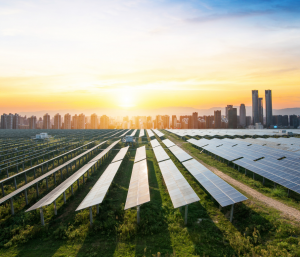Labor Announces Its Renewable Energy Policy For The Next Federal Election
Among Labor’s renewables related commitments are initiatives to make solar power accessible to some of the many Australians currently missing out.
Labor Leader Anthony Albanese unveiled his party’s Powering Australia plan, which he says will slash greenhouse gas emissions 43 per cent by 2030, create more than 600,000 new jobs, reduce electricity prices by $275 a year per household by 2025 and stimulate a shedload of private investment.
While under a business-as usual-scenario there would be a 35% emissions reduction anyway, as the Climate Council’s Amanda McKenzie notes:
“Labor’s plan helps bridge the gap between the Morrison Government’s do nothing approach, and state government and business leaders who are forging ahead to create jobs and grow our nation’s prosperity by slashing emissions this decade.”
The somewhat underwhelming nature of Labor’s emissions reduction outcome given the situation humanity finds itself in aside, there are some interesting elements in the plan in relation to solar power.
Shared Solar Banks
An estimated 35 per cent of Australia’s population is locked out from accessing solar benefits – primarily renters, apartment residents and those simply unable to afford the upfront cost. Labor’s Share Solar Banks initiative would involve $100 million direct investment to support around 25,000 households to own or lease part of a large solar installation.
Community Batteries
If Labor wins the next election, it will invest $200 million over four years in community batteries through a capped, standalone grants program. This would deliver around 400 community battery systems with a proposed 500kWh capacity each.
As to where the batteries would be installed, it may include communities prone to natural disasters and those experiencing “fringe-of-grid” issues where it is costly to upgrade and maintain poles and wires serving them.
Community battery storage is also proving to be useful in areas with solar uptake so high it threatens grid stability at times. While these periods may be quite short, this has led to zero solar exports or low export limits imposed on new solar households in affected areas. In some places, households and businesses have been prevented from installing systems.
Community batteries can act as a “solar sponge”, storing surplus solar energy and releasing it when needed later in the day or overnight – and generally improving local network electricity quality.
Among various other actions under Labor’s Powering Australia plan is an electricity grid infrastructure blitz to address transmission issues and drive down power prices, an electric car discount and reducing the Australian Public Service’s emissions to net zero by 2030.
“Less than a month after the biggest climate conference in world history Australia has been asked to try again when it comes to climate policy, after being ranked last in the world,” said Mr. Albanese. “The Morrison Government is unable and unwilling to rise to this challenge. Labor will, and as we do, we will create jobs, economic opportunities across Regional Australia and cheap power.”


